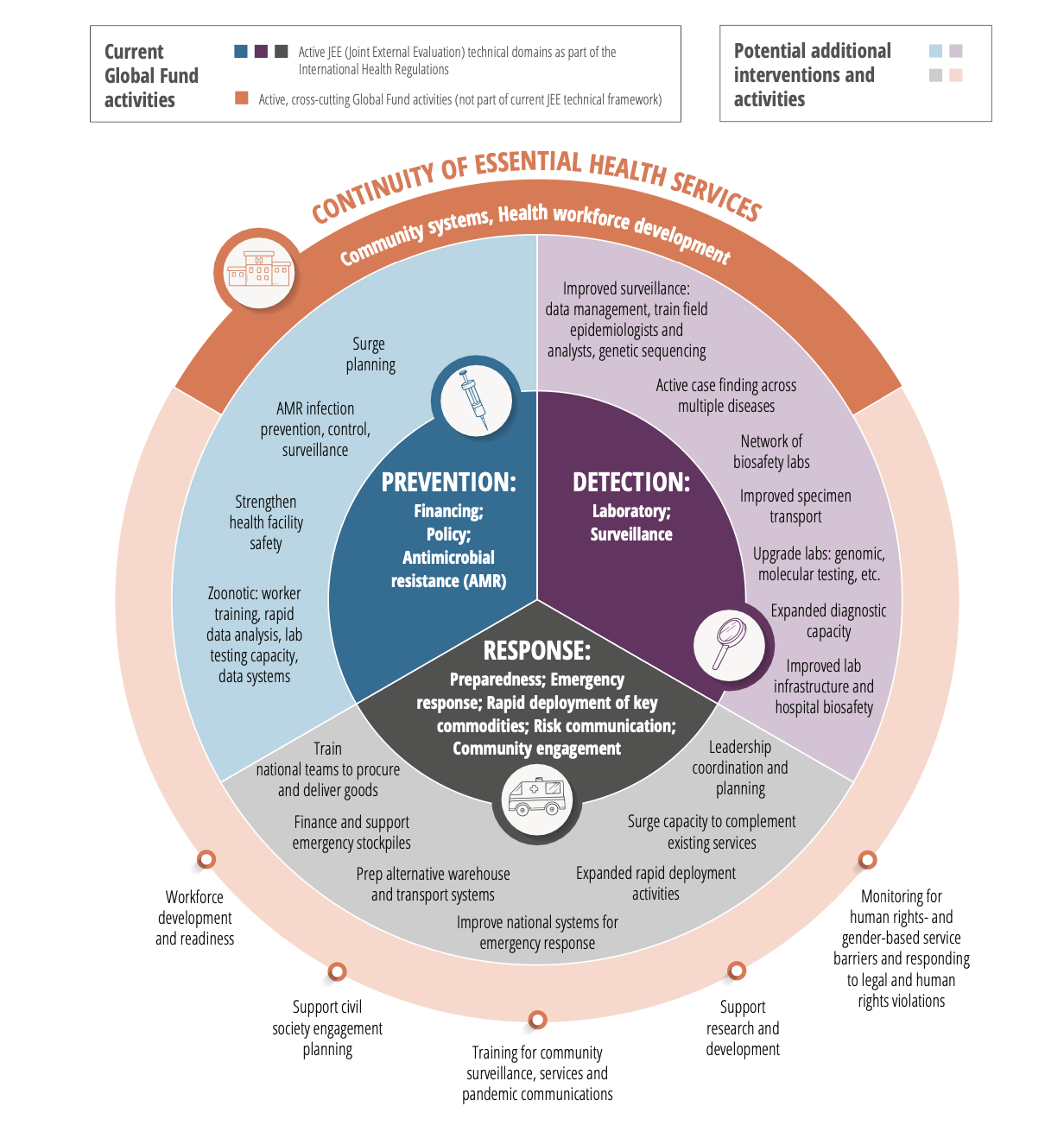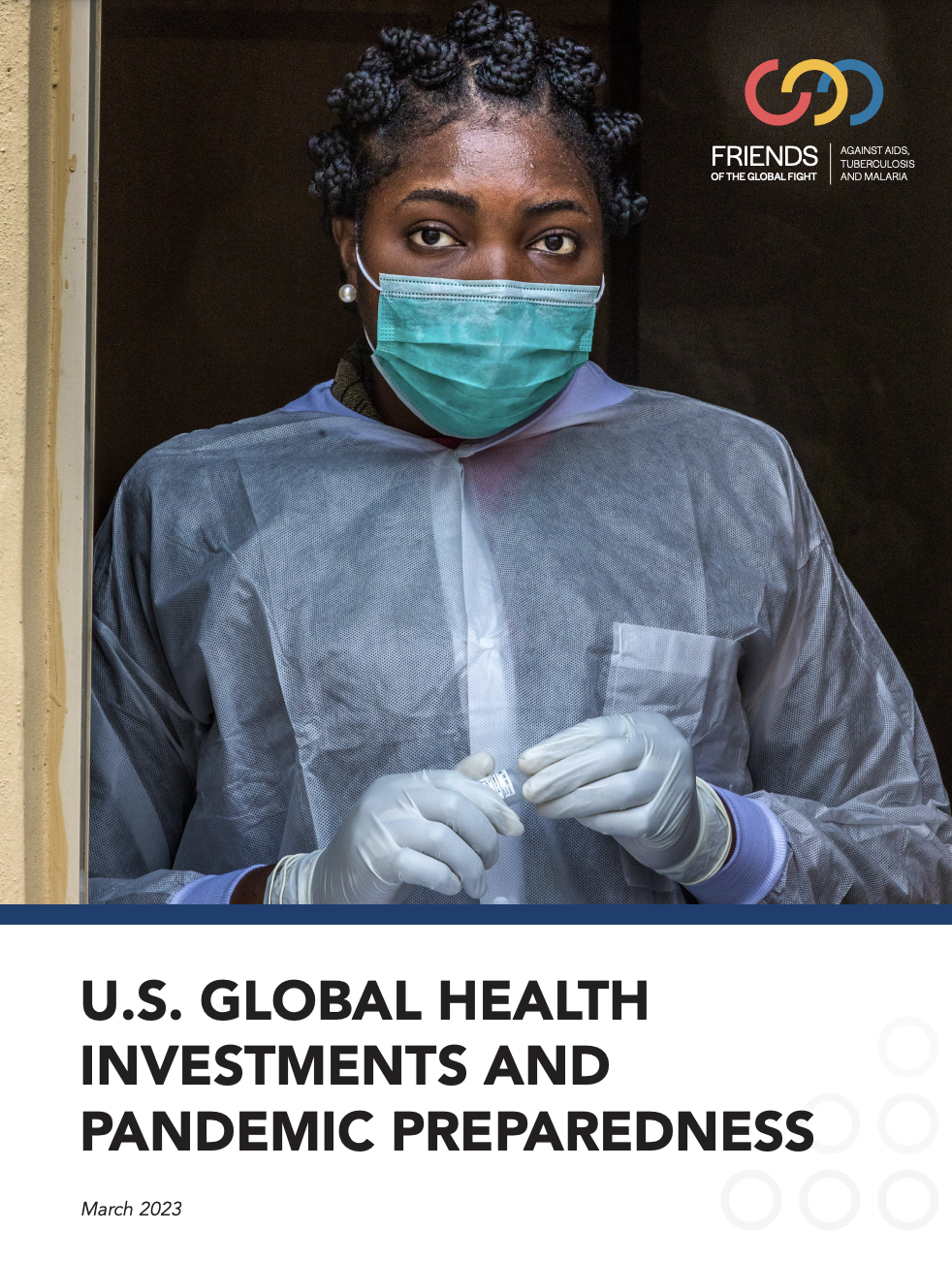The Global Fund’s investments in HIV, TB and malaria build more resilient health systems, making the world safer for everyone. The Global Fund is helping communities respond to COVID-19 and the pandemics of tomorrow.
Why is Pandemic Preparedness and Response Important?
The COVID-19 pandemic has revealed how vulnerable the world is to emerging infectious diseases. Global Fund Executive Director Peter Sands argues, “more future threats are likely to emerge from the failure to respond effectively to current diseases. The more they are allowed to continue, the greater the threat they pose to everyone, as has become painfully obvious with COVID-19 variants and multi-drug resistant tuberculosis.” In our modern interconnected world, we are only as strong as our weakest health system.
However, we do not lack the technology or structural capacity to respond to future pandemics. We have the ideas, the scientific and technological resources, the corporate and civil society capabilities and the finances needed.
How is the Global Fund’s Work Connected?
The Global Fund was designed to fight pandemics and has been investing in activities that contribute to pandemic preparedness and response for the last twenty years. A February 2021 analysis in the Lancet found that over a third of the Global Fund’s investments support global health security.
The Global Fund’s ongoing COVID-19 response shows us that the Global Fund has already proven itself to be an effective and efficient financing mechanism for pandemic preparedness and response.
Read our report on where the Global Fund is well positioned to expand its pandemic preparedness and response work with additional resources.
How does the Global Fund work with U.S. Bilateral Programs?
U.S. investments in disease-specific programs are contributing to people-centered systems for pandemic preparedness. One of the best ways to prepare for future threats is to invest now in the programs, systems and people needed to respond to existing threats. The Global Fund is working with the U.S. bilateral programs– PEPFAR, President’s Malaria Initiative and USAID’s TB program ––to expand capacity around the world to respond to the next pandemic.
What are the Costs Associated With Pandemic Preparedness and Response?
The G20 High Level Independent Panel released a report proposing a global plan to reduce vulnerability to future pandemics. The report makes the case why an annual contribution of $15 billion could help prevent the next pandemic. It also recommends that the Global Fund play an institutional role in distributing this funding.
When compared to the cost of COVID-19, $15 billion is relatively small. Investing in pandemic preparedness and response could save us trillions. According to a report by McKinsey and Company, the economic disruption caused by the COVID-19 pandemic could cost the world more than $16 trillion.
“I see a greater Global Fund role in pandemic preparedness and response as an enormous opportunity to advance progress on AIDS, TB and malaria. It would allow for identifying synergies in health service delivery and epidemic response. It would avoid further siloing of global health investments. When the next pandemic threat comes, expanded Global Fund engagement in health security would help maintain AIDS, TB and malaria services.”
– Friends’ President and CEO, Chris Collins
Other Resources:
Put the Global Fund at the Center of Pandemic Preparedness and Response
Human Rights are Essential to True Pandemic Preparedness and Response


